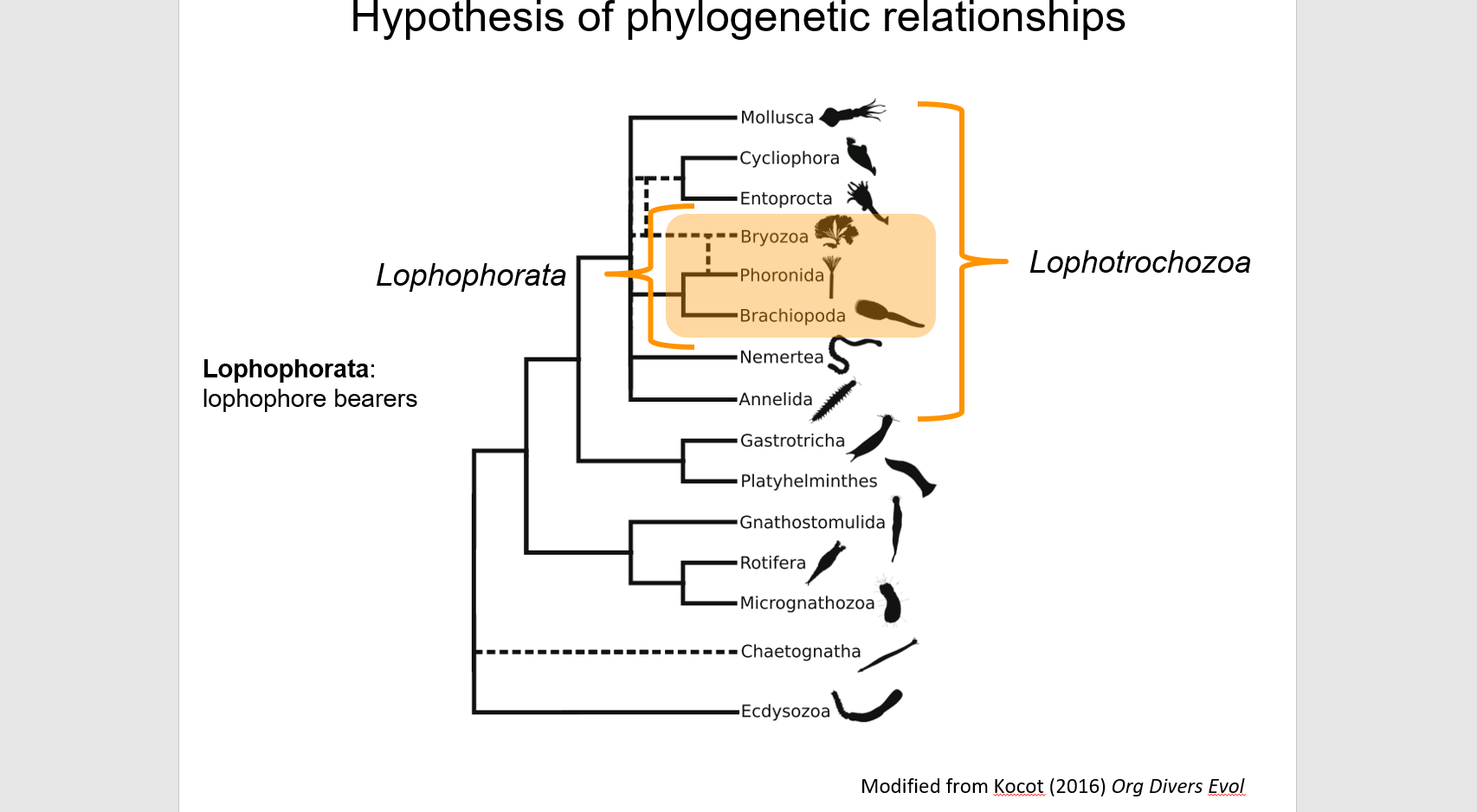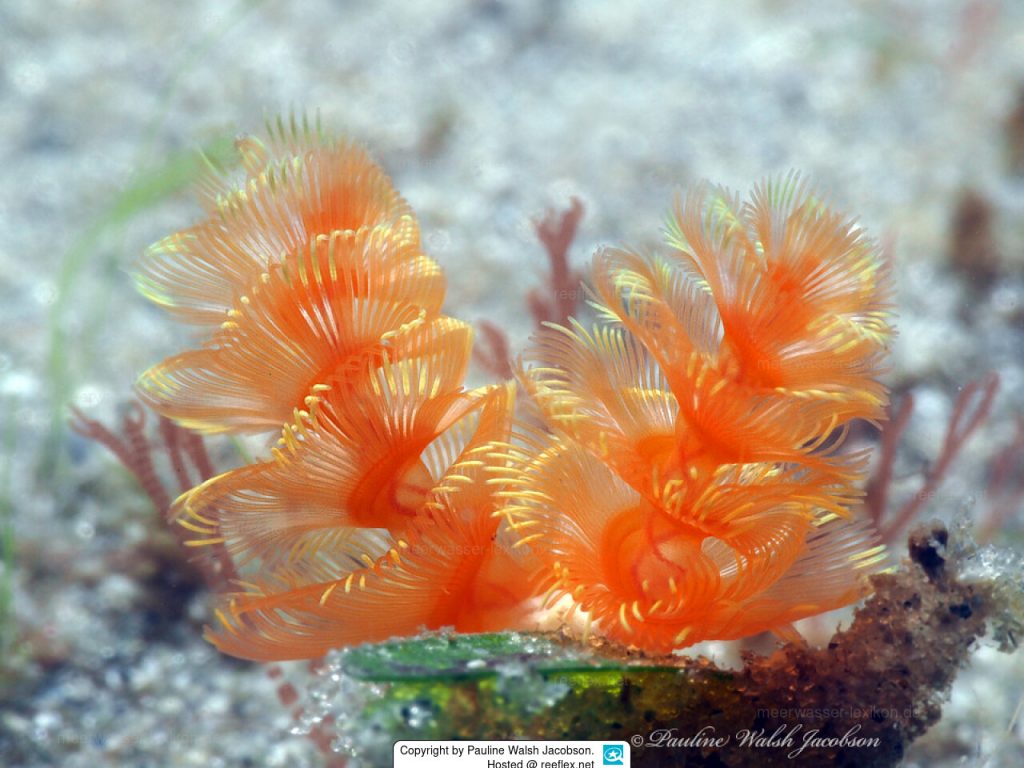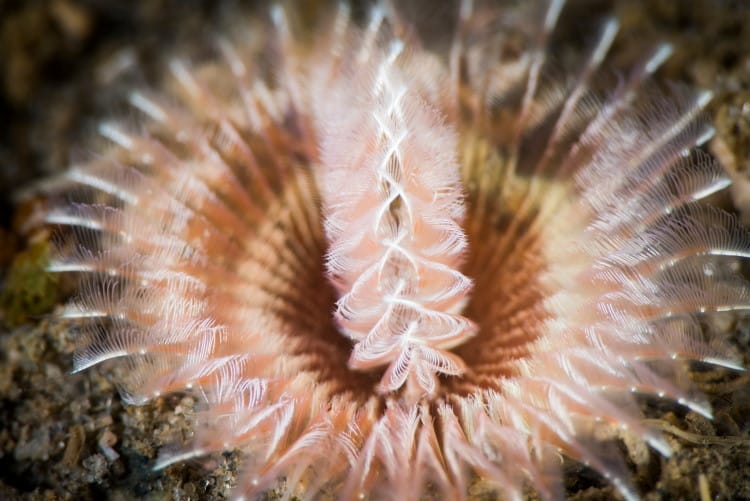This month, I wish to present a very beautiful invertebrate phyla, namely Phoronida – also known as Horseshoe worms.
The phylum is fairly small, with 13 recognized living species, divided into two genera; Phoronis and Phoronopsis. They are found within the phylogenetic grouping of Lophotrochozoa, more specific within the Lophophorata, which are regarded as the lophophore bearers. Included in the Lophophorata are Bryozoa, Brachiopoda and Phoronida. The phylogenetic relationships within Lophotrochozoa have been uncertain and discussed a lot, but the most likely topology based on current molecular evidence has recovered the Lophophorata as a monophyletic clade, with Brachiopoda forming the sister-group to Bryozoa + Phoronida.

Basic anatomy
Phoronida have as mentioned the defining lophophore, which comprise of a crown of ciliated tentacles surrounding the mouth, which is functioning as a feeding apparatus. In phoronids, the lophophore is either horse shoe shaped or spiral shaped. The majority of phoronids have the horseshoe shape, hence their informal name being horseshoe worms.
The adult phoronids are exclusively marine creatures. Phoronids have a vermiform body, enclosed in a slender, chitinous tube secreted by epidermal cells. The animal moves freely in the tube but it never leaves it. Externally they are bilaterally symmetrical, but internally they are asymmetrical with left-side dominance. The body is divided into two main parts, the lophophore and the trunk, and the animal is anchored to the substrate by the ampulla, the end-bulb of the body. The tubes may be anchored singly or in a tangled mass on rocks, shells, or pilings or buried in sand or boring in rocks and shells. In soft sediments, the phoronids burrow downwards posterior end first. This active burying is accomplished by the ampulla, by muscles contractions and hydrostatic pressure changes.
The lophophore is used both for feeding and respiration. Food particles, primarily plankton, are caught by the cilia and directed to the mouth, which leads to a U-shaped digestive tract ending in an anus located near the base of the lophophore. The flow of water generated by the cilia also facilitates gas exchange.

Phoronopsis californica
Life cycle and reproduction
Phoronids have a complex life cycle that involves both sexual and asexual reproduction. Most species are hermaphroditic and some are dioecious, meaning individuals are distinctly male or female. The gametes are released outside the trunk via the metanephridia which function as gonoducts. The sperm is packaged into spermatophores produced by one or two lophophore organs and released into the water, where the spermatophores are captured by the lophophore of other individuals. The eggs are fertilized internally in the trunk coelum, and only rarely it happens externally. The embryos are expelled through the metanephridia and either brooded in the lophophore or released into the plankton. The resultant free-swimming larvae, known as actinotrochs, are unique to phoronids. These larvae undergo a remarkable metamorphosis when the time comes to settle on the substrate and transform into the sedentary adult form.

Phoronis hippocrepia
Other interesting facts
- Small but widespread: Phoronids are few in number, but their geographic distribution is quite broad. They can be found in seas across the world, from the Arctic to the tropics, and from intertidal zones to depths exceeding 400 meters.
- The fossil record of soft-bodied phoronids is poor. Burrows and borings attributed to phoronids are known since the Devonian (about 400 Ma).
References:
Gąsiorowski, Ludwik. (2023). Phoronida – A small clade with a big role in understanding the evolution of lophophorates. Evolution & Development.
![]()

1 Comment on “Group of the month July – Phoronida”